|
By Karima Alavi
In my last Abiquiu News article, In Search of a Different Path, I indicated that I’ll be writing a series of pieces about Dar al Islam, the mosque and madressah (retreat and educational facility) in Abiquiu, New Mexico. As we all know, a project of that scope has to begin with an idea and a dream. It also helps when different parts of a puzzle fall into place to create a finished picture of what was meant to be. That takes us to a hot, sunny day in Saudi Arabia in 1979. Two men prayed next to each other at the holy mosque of Makkah before striking up a conversation. Stephen Durkee, who had taken the Islamic name, Nooruddeen, was in Makkah to study Islamic faith and practice. Accompanying him was his fellow student and wife, Noora Issa. As it turned out, the man praying next to Nooruddeen was a Saudi industrialist by the name of Sahl Kabbani. Nooruddeen mentioned the American Muslims in Santa Fe who held a strong desire to have a mosque to pray in. At the time, local Muslims were holding their Friday prayers in a carpet store near the plaza. Kabbani wanted to offer something back to America in recognition of two things he had received here: a graduate degree from Worcester Polytechnic Institute, and his American wife, a woman to whom he sent a bouquet of flowers every morning since their wedding day. The conversation moved to the critical subjects of finding a site, and funding the purchase of land, at which point Mr. Kabbani offered to donate the down-payment for whatever property was selected. He would eventually succeed at obtaining enough donations to pay off the land of the first of two purchases, creating the beginning of a debt-free foundation for the many young, enthusiastic Muslims who saw the seeds of their dream taking hold in northern New Mexico. There would be a second purchase of land at a later date. Nooruddeen was quite familiar with this area. He and his first wife, Barbara, co-founded and lived at the Lama Foundation, an educational and religious retreat center north of Taos, New Mexico. During that time, their friend, Ram Das, returned from his first journey to India where he studied eastern spiritual traditions with a Hindu guru. It was at Lama, that Ram Das wrote his book, eventually titled, Be Here Now. The book was published and distributed with the help of the Durkees, until it was picked up by Random House Publishing who turned it into a classic icon of 1970’s spiritual writing in America. The Lama Foundation attracted seekers of many faiths. With time it also became a gathering place of newly converted American Muslims who traveled to the center to meet fellow Muslims and study their faith together. Several couples who spent time living at Lama were destined to be part of the force behind the founding and building of Dar al Islam. By 1980, the time had come for Nooruddeen and his second wife, Noora Issa, to return from their studies in Saudi Arabia and find a site for the Dar al Islam mosque, along with input from other New Mexico Muslims. A realtor led the group to a cattle ranch called Rancho de Abiquiu. When the Muslims from Santa Fe and neighboring towns stood on the mesa overlooking the Chama River and Abiquiu Pueblo, they decided to look no further. It was important to the early group of Muslims that the mosque be built at the exact center of the ranch’s mesa. To that end, they divided into two small groups. One remained on the mesa. The other climbed to a ridge that overlooked the site. Through hand signals, flag waving and very loud voices, the sweet spot that seemed to mark the center was selected. Amidst a gentle wind that carried the scents of chamisa and juniper, one of the men planted a green flag into the ground. Written against the green background were the white lines and curves of Arabic letters proclaiming the Islamic declaration of faith: There is no god but Allah (the One God,) and Muhammad is his prophet. The group lined up in a row before prostrating with their foreheads to the ground in gratitude to their Lord. Finally, they had found a new home for their prayers.
0 Comments
Interview with filmmaker Renea Roberts
By Jessica Rath
Maybe you saw the announcement: On Friday, 2/28, at 7 pm, Episode I of the docuseries Thinking Like Water will be offered at Ghost Ranch as part of the San Juan-Chama Watershed Partnership’s 2025 Annual Congreso. Filmmaker Renea Roberts (who will be present to answer questions) is an old friend of mine, and she re-shuffled her schedule to find some time to talk to me – thank you!
I love the title. Usually, thinking is understood to be a human prerogative, but the title implies that water and streams and rivers have their own wise ways, that their flow isn’t arbitrary and accidental but follows some inherent intelligence. Plus, the title seems to suggest, when humans listen and open up to the wisdom of the water, the result is positive; beneficial to all.
The focus of the documentary is Bill Zeedyk, a naturalist and “River Re-Creator” who uses his concept of Induced Meandering to restore streams and waterways to their original and natural way of flowing. Often they are downcut, a result of straightening the flow/path, to make cattle grazing or crop irrigation easier – which invariably causes wetlands to vanish and vegetation and wildlife diversity to shrink. What inspired Renea to make a film about Bill, how had they met?
As usual, I like to start an interview with a bit of background about the person I’m talking to, and as usual, I learned many new things about a person I’ve known for many years!
Renea grew up in Georgia, and moved to New Mexico about 20 years ago. She had done some traveling in the Southwest and fell in love with the landscape; she ended up on top of a mesa southwest of Santa Fe, with a solar powered, off-the-grid house. Living in New Mexico, she quickly realized how valuable water was! But it took a while before she started this documentary. How did she get into filmmaking, I wondered.
Actually, Renea got a Master’s Degree in Community Psychology, a field that interested her because it had the potential for activism: helping groups of people who had been disenfranchised. She learned to think differently about problem solving: to realize that people know the answers to their issues, to be a catalyst for these solutions to come forth. Making documentaries seemed to be a useful way to be an advocate.
“I wound up taking a few documentary and film classes. And then when I traveled somewhere I just started to shoot different stories. And things moved along in that direction.” I had already experienced Renea’s dedication to give a voice to disenfranchised communities, to help protect their physical and cultural landscapes, and film them in a captivating manner. She had produced the documentary Rooted Lands about the village of Mora, in New Mexico’s southeast, and their battle against big oil and gas speculators who threatened to bring fracking to the area. It became the first county in the nation to ban hydraulic fracturing.
“The project with Bill Zeedyk began after I met a rancher up in the four corners area,” Renea continued. “He told me about Bill and that they were planning a workshop with him, and he asked me if I wanted to join and film the event. So that’s what I did, I followed Bill around for three days while he taught road maintenance crews how to do all kinds of different landscape treatments on roads. I could see what a big impact he would have on the landscape, especially in an area with so much oil and gas extraction.”
“I think I started shooting in 2017, but it wasn’t a continuous process. I did other things inbetween, and then in 2018 and 2019 I shot a lot, but then came Covid and actual filming was on hold. I was able to watch a lot of the footage I already had and do some transcriptions.”
Renea explained the methodology: “One hour of shot film can easily take 10 hours of ingesting, watching, coding, and editing. It takes a while before you know what you want to do with it, until you see a pattern and it all comes together. It was good that the filming stretched over a long period of time. I could revisit places where restoration work had been done, it allowed me to go back to those places and see how the landscape was responding and try and capture that feeling on film too.” Bill was in his mid- 70s when the filming started, and Renea followed him and his projects. They went to several areas in New Mexico, like the Valles Caldera National Preserve, Fort Union Ranch, and the Valle Vidal – which is featured in Episode 1. Filming also occurred in Colorado and Arizona and includes stories from Texas. For Bill’s formative time in Mexico she used a lot of photographs, also for the earlier time of his career when he lived on the East Coast and worked from Maine all the way down to North Carolina.
How did he develop his technique of stream repair, I wanted to know.
Renea explained: “He had that interest even as a kid; in high school he spent a lot of time outside, it might have been hunting muskrats, things like that. Over time he developed this deep relationship with nature and that became his approach. I think he is trying to lessen the damage we’ve done and let nature take over using the process she already has. And so his approach is: first observing, and then finding something incremental, not trying to fix it all at once but just doing a little something and coming back to observe again, learn from it, and keep going. And this approach is more available for more people, I think. It's as much an art as it is a science.” “Bill's approach inspires people to have a relationship with nature that many have lost,” Renea continued. “It can be hard work, moving the rocks, or some big branches, and it requires patience and takes time. It means to be on nature's timing. That's part of what I like about his work.”
“Bill Zeedyk was a biologist, and he focuses on habitats for all kinds of creatures. He worked with different groups, for example people who are concerned about the Rio Grande Cutthroat Trout along Comanche Creek in the Valle Vidal. And there is a large partnership of public groups and private landowners concerned about the threatened Gunnison Sage Grouse up in Colorado, that’s the focus of Episode Two. And if you help one creature, you're usually helping all of them!”
Renea added: “Bill’s work kind of connects all the elements. It is about water, but it's also about the soil, the earth, and the air. The heat evaporates water. All the elements are intertwined.”
“Some people think that Bill’s work helps to mitigate climate change. Other people may be resistant to talk about the climate, but they'll talk about drought, or they'll talk about extremes. Bill is always good about talking to people with different viewpoints or beliefs, he helps them to come together at the common element. If you don't want to talk climate change, well, let's talk drought. Bill is so humble, and that helps.”
It must feel so good having completed this five-part series, being done with all the work. And episode I already won an honors award at a film festival. However, maybe now is time for a lot of promotional work, I asked?
Renea was rather sanguine about this. “Bill’s reaching an older age, and I don’t have the resources to do something like a film festival run. It's not just one film, but five episodes. I am just allowing it to find its own flow, to get out there. Maybe through the people that know about the work first it will ripple out to more and more people.” “It is interesting how many people are reaching out from all different walks of life,” she went on. “People I collaborate with mostly thought that I was too ambitious, making a series. Asking ‘ Are you sure you want to do that?’ But it just always made more sense to me, because there are so many layers to Bill’s work and the whole issue. So, I am glad that I did that. But it was a lot of work. I've definitely had people who helped and colleagues who have helped do drone or film, or other people helping with the web presence, and other different things. But the bottom line is that I have been juggling a lot of it, editing and doing the bulk, and so then it starts to shift gears. I also have to find my own meandering pace, because I only have so much energy, and I’m learning as I go.” But Renea will be at Ghost Ranch this Friday, she assured me. Don’t miss your chance to meet this lovely, creative person! “I’ll be there, and Steve Vrooman, with Keystone Restoration Ecology and Phil Carter with Albuquerque Wildlife Federation will be there. They've also done a lot of work with Bill. He won’t be there on Friday, but he’s done work with Ghost Ranch over the years.” Renea talked some more about Ghost Ranch. “They had some really heavy flooding a while back, when some buildings were washed away and the whole landscape changed drastically. We actually did a walk there not that long ago. It was interesting, because I remember filming there for another project, some ten or so years back. I walked to Box Canyon, and I could see how much the flood had cut down. It looked totally different. We walked through some other places and we could see where some restoration work had been done. They had to use machines, because the rocks were much bigger, but it was based on the same philosophy as the hand work, just at a bigger scale.”
I had one other question, Do you have any new projects, or do you need a bit of time to catch up and recuperate?
“I definitely need time," Renea told me. “And I think I want that time, and I also just want to be with this current project, while it is getting out there. There is so much for me to learn. Plus, I want to catch my breath, and just see where this is going.”
This makes sense. What a gargantuan undertaking! But it must have left a lasting impression on Renea, documenting the work of such an inspiring individual over an extended period of time. Bill Zeedyk has become a living legend among conservationists and anybody who strives to repair degraded streams and waterways. “He’s mentored 25+ proteges who have gone on to make their own unique contributions in the field, most with successful businesses to boot. Has field-taught over 3,000+ volunteers. Has master-designed the improvement of over 400+ miles of streams, 4,000+ acres of riparian floodplain areas and many many miles of dirt roads.”
About Bill Zeedyk). People who studied with him have taken his methods to England, Portugal, Spain, South Africa, Australia, Mongolia and China. Thank you, Renea, for sharing your work with us. I didn’t know anything about Bill, and I’m grateful that you introduced me to the life and achievements of this outstanding person. If you want to learn more about this exciting project, please visit the website: Thinking Like Water. Below is the docuseries trailer: One man was in jail and one man was dead Monday night after a stabbing that happened earlier in the day at the Ohkay Express Travel Center.
The Española/Rio Arriba County E-911 Center received a call at 2 p.m. from a woman who said a man, later identified as Anthony Velasquez, 32, was outside and had been stabbed in the chest; he was conscious and breathing at that time. Two minutes later, he lost consciousness. He possibly had multiple other stab wounds. When Rio Arriba County Sheriff’s deputies arrived, he was unresponsive. Sheriff Billy Merrifield said Tuesday morning that Velasquez had been sitting in the backseat of his mother’s car in the Ohkay Owingeh Laundromat parking lot, with the door slightly open, while his mother did laundry. “He (Cesar Garcia) was seen walking around the gas station and laundromat area,” Merrifield said. “He goes into the laundromat a couple of times and management told him to leave.” He said witnesses told deputies that Garcia tried to get into a couple of secured vehicles while he was walking around. It’s suspected that he attempted to get into the car Velasquez was sitting in and an altercation took place, resulting in the stabbing. Merrifield said his deputies are going to pick up video surveillance soon, so they can get a better idea of what happened. Following the stabbing, the caller said the suspected assailant, later identified as Garcia, 26, of Taos, ran off and was wearing a red jacket, cargo pants, white shoes and a tan baseball cap. He ran across the highway and fled southbound, the E-911 log said. RASO Major Lorenzo Aguilar said people on scene had reported that Garcia was hanging around the area all day, asking people for money. After he fled, Garcia was spotted running back toward the Ohkay Laundromat, then was seen running toward a house while being chased by two other men. He was eventually detained on Jackrabbit Trail. A careflight had been called at about 2:12 p.m. to transport Velasquez, however, it was canceled at 2:18 p.m. because he “expired.” After they caught up with him, deputies took Garcia into custody without incident. They recovered the knife he allegedly used to stab Velasquez in Garcia’s left, front pocket. The knife was collected for evidence. Men who were working in a ditch nearby told deputies that while Garcia was on the run, he attempted to carjack them. An investigator with the Office of the Medical Investigator arrived and declared Velasquez’s time of death at 4:53 p.m. Aguilar said a car that Garcia drove was recovered about 30 miles away from Ohkay Owingeh on Tuesday. He said video surveillance from the nearby Ohkay Casino helped deputies identify the vehicle. Merrifield said Garcia may be a person of interest in a double homicide in Taos on Monday. “I was contacted by the Taos County Sheriff’s Office,” he said. “They had a double homicide and there’s a possibility that he may be linked to that. Right now, he’s a person of great interest by Taos County Sheriff’s Office but it’s an ongoing investigation. It’s a good possibility he’s going to be a suspect.” According to news reports, Ashley Casias, 34, and Anastasia “Stacy” Romo, 39, were found dead with multiple gunshot wounds in a mobile home on the north side of Taos. Taos County Sheriff’s deputies were doing a welfare check and found the women. Garcia has been charged with one count of first degree murder (willful and deliberate), a capital felony; and one count of attempt to commit a felony, to wit: Unlawful taking of a motor vehicle (first offense). He is being held in the Rio Arriba County Detention Center in Tierra Amarilla. 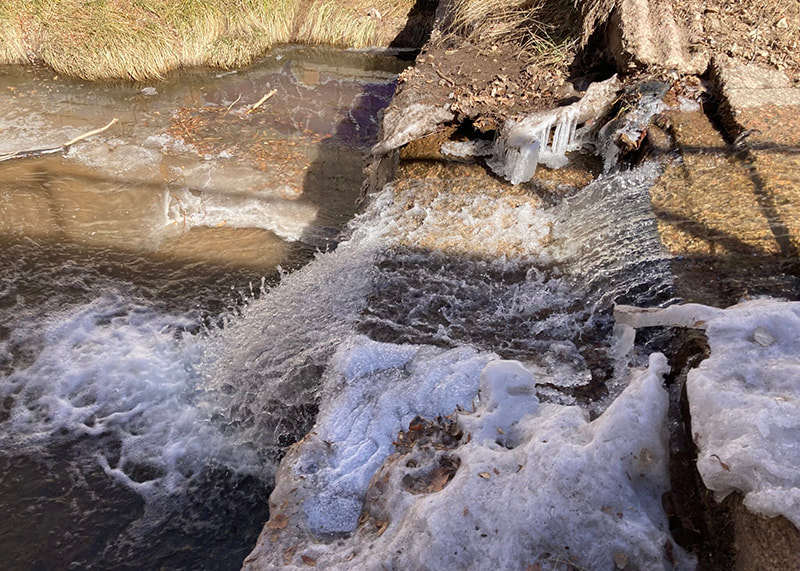 The Santa Fe River, running through Downtown captured on Thursday, Feb. 13, 2025. A bill which would give New Mexico the power to regulate surface water pollution and continue establishing a state program to permit discharges advanced through it’s third committee Friday, heading to the House Floor. (Danielle Prokop / Source NM) By: Danielle Prokop
Source NM A bill to enshrine the state’s right to regulate pollution in surface waters like streams and rivers and continue the yearslong process to develop a state program for permits, heads to the Senate floor after advancing through its third committee Friday. Senate Bill 21, sponsored by Sens. Peter Wirth (D-Santa Fe) Robert “Bobby” Gonzales (D-Ranchos de Taos) and Rep. Kristina Ortez (D-Taos), received a party line vote 6-4. It would need to continue through House committees, a floor vote and receive the governor’s signature before becoming law. Currently, New Mexico is one of only three states that cedes regulation of pollutants in state waters to the U.S. Environmental Protection Agency. The proposed law furthers the state permitting program currently under development in the New Mexico Environment Department. The bill reinstates federal protections removed for rivers that don’t have continuous flow in the 2023 U.S. Supreme Court decision Sackett v. EPA, according to Rachel Conn, the deputy director with Amigos Bravos, a river nonprofit based in Taos which endorsed the bill. “It’s very important work to restore these protections that have been these clean water protections that have been lost in recent years,” Conn said. As layoffs continue at federal agencies, including the EPA, Conn said the bill offers important stability. “It underscores the necessity for the state to take over permitting so permits can continue getting issued,” she said. “That provides regulatory certainty for dischargers in the state.” The New Mexico Environment Department estimates 95% of rivers and streams in New Mexico no longer have federal protections, which require permits for pollution including sewage, industrial or construction wastes. In data from October, the EPA said approximately 4,000 permits in New Mexico, including: more than 3,000 stormwater from construction; 89 permits for wastewater treatment plants or industrial facilities; 21 feedlot permits; 35 with municipal storm sewer permits; and 10 permits that cover permits for pesticide use. Wirth said Friday lawmakers will need to determine in the future how the program will be funded, saying other states often fund programs in a “hybrid” fashion – partially with fees, partially with state money. “Again, there’s no impact on the budget this year, this will be down the road,” Wirth told committee members. The fees for the permits would be established in a future rule-making process. An analysis from the Legislative Finance Committee estimated that using fee structures from Colorado using the current permits could generate $3.4 million to $8 million based on complexity of the permits, but noted it could be higher. Contact(s): Sarah Smith
Santa Fe, N.M., February 26, 2025— As early spring weather brings warmer temperatures and winds to northern New Mexico, the Santa Fe National Forest (SFNF) wants to share with our communities that fire managers used a variety of techniques, including aerial infrared monitoring, to confirm no residual heat remains on fall and winter prescribed fire projects. In late 2024 and early 2025, SFNF fire managers treated hazardous fuels through prescribed fire projects in the following locations: Jemez Ranger District: Hill Unit, Seven Springs Pile, Triangle Pile, Joaquin North Cuba Ranger District: Deer Lake Pile, Tusa's West Pile Coyote Ranger District: Lino Pile, Gobernador Pile Española Ranger District: Hyde Park Pile After project implementation, efforts shifted to patrolling and monitoring prescribed fire units to ensure fire stayed within the project boundaries and was fully extinguished. Crews patrolled prescribed fires frequently and addressed any hotspots located on the ground before shifting to aerial monitoring to ensure no heat remained. Crews flew a fixed-wing aircraft equipped with a military-grade infrared camera system over all prescribed fire locations. These camera systems can pick up a heat source the size of a dinner plate and are used identify heat that is not visible or felt while patrolling on the ground. Each prescribed fire is different and requires a unique set of tools to call the fire out. Personnel will continue to focus on patrolling the burn units and work to call the prescribed fires out. The SFNF is not planning to implement any spring prescribed fire projects and will instead focus on preparing resources for possible wildfires this season. Prescribed fire projects maintain and improve wildlife habitat, prevent forest overcrowding, and lessen the severity of wildfires. To learn more about our Santa Fe National Forest prescribed fire program please visit our website. By Sara Wright
The day after the presidential election in 2016 I picked up what I initially thought was a saw whet owl wing while wandering down a red dirt road in Abiquiu NM. Just one wing and one talon. When I did some research to confirm identification, I learned that I had found the remains of a boreal owl, not a saw whet. The wings of the former are larger. I have only glimpsed a boreal owl a few times until this winter, but apparently, I have a resident because one hunts before dawn sitting on the same crabapple branch situated next to the side door. Although I eagerly look for him each dawning, I’ve also been concerned for the weasel that lives under the porch, although this owl is not supposed to eat mustelids but is said to feast on smaller prey like mice or voles and even little birds. Three nights ago, I heard one of his calls, a short series of staccato ‘whoos’. According to the literature this is not a mating call which would last much longer. The boreal owl (Aegolius funereus) historically inhabits northern boreal forests but curiously its range extends as far south as New Mexico in the west and into Northern New England and Minnesota in the east especially during years of food scarcity. With even more aggressive logging on the horizon, I can’t help but wonder about owl habitat, one reason I visit the window each morning before letting my dogs out. I treasure each sighting because I don’t know if I will see this little owl again. He has a squarish head, arched eyebrow markings, and piercing saucer -like eyes that I know are yellow though I can’t see the hue in dim light. Yet even then the white spots on his wings are visible. Although I never move once I have reached the window this bird knows that I am watching him. He periodically raises his head to stare in at me. At other times he disappears into the tangled center of Mother Pine the moment I move to the window. I think this owl is a male because his overall size is so close to that of a saw whet. The females are larger. Boreal owls are not supposed to breed in Maine, so I am mildly surprised that he is still here the last week in February. Is it possible that he could breed here because most of my woodpeckered snags have cavities, and also because I have a mass of thick evergreens? After all, everything else is changing. These owls are monogamous for at least one year. Three to six eggs are laid, the male feeds the female during nesting, and after the nestlings are born in the spring the male continues to feed the female and her owlings who remain with her for a few weeks. Papa is an excellent father! Like most of their kind boreal owls have asymmetrical ears located at different heights to facilitate hearing, feathers adapted for silent flight, and eyes that are immobile but compensated for by the owl’s ability to turn his head 270 degrees, an amazing thing to witness. Many aerial predators are threats, most are other hawks and owls. Horned and barred owls along with goshawk and cooper hawks frequent this area, so no wonder my little friend spends his days under thick pine needled cover. One day while snowshoeing through the young pines I came upon small wing prints that probably belonged to this owl. A few drops of blood told the rest of the tale. Owls in general are feared by many Indigenous peoples (the Navajos are one example) perceived as omens of death or predictors of the future. I do not take a position on these ideas except to say that all owls seem to have an aura of mystery around them. When I was about forty, I attended a weekend ceremony led by a Navajo medicine woman who was clearly keeping her distance from me. I finally asked her why she was behaving the way she was. At least she was honest. She told me I had owl medicine, but when I asked her what this was and why it was a problem, she refused to answer me. Like other owls the boreal owl is ruthlessly mobbed by crows and other birds while roosting during the day. Whenever I hear a raucous mob, I go out to see if it’s possible to see the poor owl who attempts to escape by taking flight from tree to tree. The remains of one boreal owl dating back to the Pleistocene ( a geological era that ended with the last ice age) were found in a cave in southern New Mexico. Bones were also found in a Pueblo in north central Mexico that has been inhabited from around 12,000 BC. through the present. Although I was unable to pinpoint the exact Pueblo, I suspect it was one that I visited while living in Abiquiu. According to a couple of sources the Tewa translate the word ‘Abiquiu’ as two words, one means ‘timbers – end’, the other ‘the hoot of an owl’. More common is the translation chokecherry way but chokecherries can be found up and down the whole river, so I question the latter interpretation, especially because to live in Abiquiu is to live with owls. I heard or saw them every day. By: Danielle Prokop
NM Source Nine people remain infected with measles in Lea County, but their conditions remain stable, with local health officials reporting no deaths or hospitalizations in New Mexico. Four of the cases are children between the ages of 5 and 17 years old, the remaining five are adults. New Mexico Department of Health Communications Director Robert Nott said the Centers for Disease Control and Prevention is taking part in the state’s daily meetings on the outbreak, which NMDOH declared on Feb. 14. “Our relationship with the CDC remains productive, with regular communication between our vaccine team and CDC officials regarding the measles outbreak and vaccinations,” Nott said in a phone call. Any additional cases detected will be published on the state’s website, Nott said. The current outbreak spilled over from neighboring Gaines County, Texas in recent weeks. As of Wednesday, the number of measles cases had risen to 124, spread across nine Texas counties, most of them children. One school-aged child has died, the first child death from measles since 2015. On Wednesday, New Mexico’s congressional delegation called on newly appointed Department of Health and Human Services Secretary Robert Kennedy Jr. to address the crisis. In a letter, the delegation urged Kennedy to continue issuing data each week on measles cases nationwide, launch a vaccination campaign and reinstate two dozen CDC workers fired last week in the widespread, ongoing cuts. “Preventing and mitigating outbreaks is only possible through effective disease tracking and communication, an adequate workforce, and vaccination,” the letter stated. Kennedy, an outspoken anti-vaccine advocate, who has repeated the untrue claim that childhood vaccines cause autism, downplayed the current outbreaks in statements Wednesday. “There have been four measles outbreaks this year in this country, last year there were 16, so it’s not unusual,” Kennedy told reporters during a cabinet meeting at the White House. “We have measles outbreaks every year.” Gaines County only has a childhood vaccination rate of 82%, below the CDC’s recommendation of 95% to prevent outbreaks. Lea County has a higher childhood vaccination rate — more than 94% of children ages 0 to 18. Prior to the vaccines, the CDC estimated that nearly all children were infected with the measles before age 15, resulting in more than 48,000 hospitalizations and 400 to 500 deaths each year. The first measles vaccines were developed in the 1960s; by the 2000s, the disease was considered extinct in the U.S. What is measles? Measles is a highly contagious virus spread through contact from an infected person’s coughs and sneezes. Measles symptoms can appear anywhere from a week to three weeks after exposure and include fever, cough, runny nose, red eyes and a red spotty rash starting on the head and face and spreading over the body. Serious complications can develop, including brain swelling, blindness, pneumonia and death. The vaccine is highly effective, with adults vaccinated as children having enough immunity to last a lifetime, according to health officials. NMDOH is offering free vaccine clinics in Lea County, and encouraging people to check their vaccinations status. Find more information online. One reader - Ann C was sick and tired of getting spoofed or spam calls and reported it.
Following was her response from the Federal Trade Commission. All Good advice. From Ann Cunningham Thank you for filing a report with the Federal Trade Commission and helping to fight fraud in your community. The FTC does not resolve individual reports, but your report will be entered in the FTC's Consumer Sentinel database and will be available to federal, state, and local law enforcement across the country. Your Next StepsIf you want to stop getting so many unwanted calls:
Want To Learn More? You can get answers to common questions the FTC gets about filing a report at ReportFraud.ftc.gov/FAQs. Find out what is going on in your state or metro area at ftc.gov/exploredata. Check out ftc.gov/refunds to see recent FTC cases that resulted in refunds. By Zach Hively There's always time for friendship, right? Let’s make this quick: I don’t have any time. My life is full and demanding as it is. Every moment I claim for myself gets snatched right back up by my two dogs or, more aggressively, by the Duolingo owl. I cannot possibly take up another pursuit, or chance unlocking another lifelong passion. Who can afford to be a Renaissance man these days? More like run-out-of-sauce man, am I right? Which is why, when one of the coolest of my very few friends asked if I wanted to play chess, I risked our friendship and said no. Then he told me about all the chess-related Instagram reels he would send me if I played. So I said yes. It feels like my duty to contribute to the national averages. Traditional TV time is down in the ol’ US of A, probably because I haven’t chipped in my share of video watching in years. Maybe ever. It’s dipped all the way to two hours and 55 minutes—not a month, not a week, but a day. I frankly don’t see how it is possible for any average person to have this much time, not with their average digital video consumption averaging four hours a day. To reiterate: These numbers include me over here, who still has yet to watch Game of Thrones. But I have now watched several whole minutes of chess-related reels. These videos make me feel like an insider—like one of those people who of course see the inevitability of checkmate in four moves. Who find glee in the elegance of some guy with a made-up name like Magnus Carlsen. Who don’t quietly look up what “castling” is because here we thought you should never call the castle-looking pieces “castles.” Chess has changed, y’all. It’s changed a LOT since that one weekend morning my dad spent teaching me one slick opening move, sure to defeat anyone with even less chess experience than me. For instance, our chess board was made of wood or some other similarly corporeal material. You could contemplate a move by shifting your pawn forward—but not ever taking your finger off its head—until your dad told you to hurry up, dude, at which point you’d return the pawn to its starting point to give your finger a rest and your dad could go make a lunch meat sandwich and maybe that was the last time you played in thirty years. Now, chess is all played on apps. These, I must note, do not count toward my four hours of digital video time. I can’t leave a finger on a piece’s head, because there are no physical pieces to touch. But I can take three whole days to make a move, at least the way my friend and I set it up. And the synthesized pieces make satisfying wood-like synthesized sounds, which so far is my favorite part. Poor Yannick—that is my friend’s name. I came in knowing only how the chess pieces move, more or less, plus the Dad’s Gambit that Yannick foiled after my first turn. But I am a scrappy player. By which I mean I’m sometimes pesky to eliminate. I play chess, it turns out, like I played Halo in college: zero kills, but also seldom killed, because I defy all sense of tactic or plausible movement. Yannick should have known this. We played Fortnight together exactly once, which is when I learned what Fortnight is. He started by presuming a baseline level of competence. He ended with a look that I can only summarize as “I should not have let him use my account.” My secret weapon in chess is this: It requires no skills with a controller. Also this: my bathroom floor is tiled in black and white. The tiles are hexagons, not squares, but when I am hiding in there where the Duo owl can’t find me, I will let my tired eyes make patterns with the tiles. I have to think this translates to the virtual chess board. We’ve played three games so far. I won the first one in a slog, to which Yannick said, “This is gonna destroy my rating hahahaha.”
He silenced me handily in the second. The third is ongoing; we have five pieces total left in play, and Yannick appears to have upgraded his account, enabling him to delay his next move indefinitely. Fine by me—all I’ve got is time. By Felicia Fredd
Enchanted Garden Productions This is a heads up to all the people out there growing, or thinking about it, who are unaware that compost is NOT actually loaded with nutrients. I've had this conversation with many people trying to grow plants both in-ground, or in pots, using "tons of good compost", or 'premium' compost potting mixes with dismal results. The initial reaction to the breaking news that their plants are probably starving is a kind of flustered disbelief. A friend of mine once shrieked “So what’s the $%! point!” Soil, compost, and plant structural and nutrient interactions are really complex subjects (agricultural chemistry territory). I know just enough to get by myself, but hopefully, I can explain the basics well enough to provide someone else with a decent starting point. Soil vs. Compost The 'point' of compost (decomposed organic material) is to improve the texture, water holding capacity, microbial activity, oxygen flow, cation exchange (complicated, but important with regard to nutrient exchange dynamics), etc. of a soil for the benefit of many of kinds of plants - especially the fast & high production plants we tend to cultivate. Soil refers to dirt. It differs from compost in that it is composed of decomposed rock which provides structure (stability) and mineral content. Soils do include compost (organic material) to varying degrees, but the reverse is not so much true. Generally speaking, well prepared compost IS great, but it does not actually contain many available nutrients. By the time compost is ‘finished’ the microorganisms breaking down that organic material have themselves extracted (converted) most of the stored nitrogen and carbon energy. So, it is, by definition, a low nutrient product. If a commercially available compost or potting soil advertises a reasonably high nutrient content, those nutrients were most likely added back in the form of fertilizer that will again deplete fairly rapidly depending on the demands of the plants cultivated. My Approach to Fertilizing To grow, most plants need the primary macronutrients: nitrogen (N), phosphorous (P), potassium (K), and other micronutrients to varying degrees. People who know a few things may get fancy with it by increasing and decreasing nutrient ratios through the growing season as needed for better leaf, flower, or fruit production. But, before you do anything at all, you need to know what you're starting with - whether that's a home compost-soil mixture, or 100% potting soil. You can find out by using inexpensive soil test kits that measure macronutrient levels. They’re sort of weird at first because the color matching system has you comparing opaque color against color suspended in liquid, but once you’ve done it a few times, you gain confidence in interpreting the readings. You really do need to know this because you need to match what a fertilizer does have (in many combinations of N-P-K ratios) to what your growing medium doesn't have. If you add high nitrogen fertilizer to a medium that's really only deficient in potassium, at baseline, you're potentially creating a problematic ‘unbalanced’ situation. Since this obviously takes a minute to figure out, I recommend purchasing individual bags of blood meal (nitrogen source), bone meal (phosphorous source), and greensand (potassium source) - no blends. If you have these things separately, you can use them separately to adjust for one or two specific deficiencies. Greensand also covers bases with regard to micronutrients. These products are organic, but not vegan; however, there are alternative primary nutrient sources such as soybean meal, or urea based nitrogen, etc. There are many ways of doing things, but for me blood meal, bone meal, and greensand is easiest and least costly. If I am container gardening (not growing in-ground), I also typically make a point of adding basic indiscriminate dirt to my compost and potting ‘soil’ blends for minerals and stability. I have no advice on ratios or particulars regarding soil types; it’s just an instinct. And Then There’s pH… It's also very important to know whether the plants you’re trying to grow are compatible with your soil pH, or acidity level. A mismatch can cause big problems. The same basic soil test kit for macronutrients typically includes a test for pH level. Decreasing pH is typically accomplished with elemental sulfur, and to increase pH, limestone is commonly added. For a deeper dive into this, and many other garden science topics, I’ve found both Linda Chalker-Scott at Washington State University, and Robert Pavlis at “Garden Fundamentals” to be great online podcast resources. |
Submit your ideas for local feature articles
Profiles Gardening Recipes Observations Birding Essays Hiking AuthorsYou! Archives
October 2025
Categories
All
|

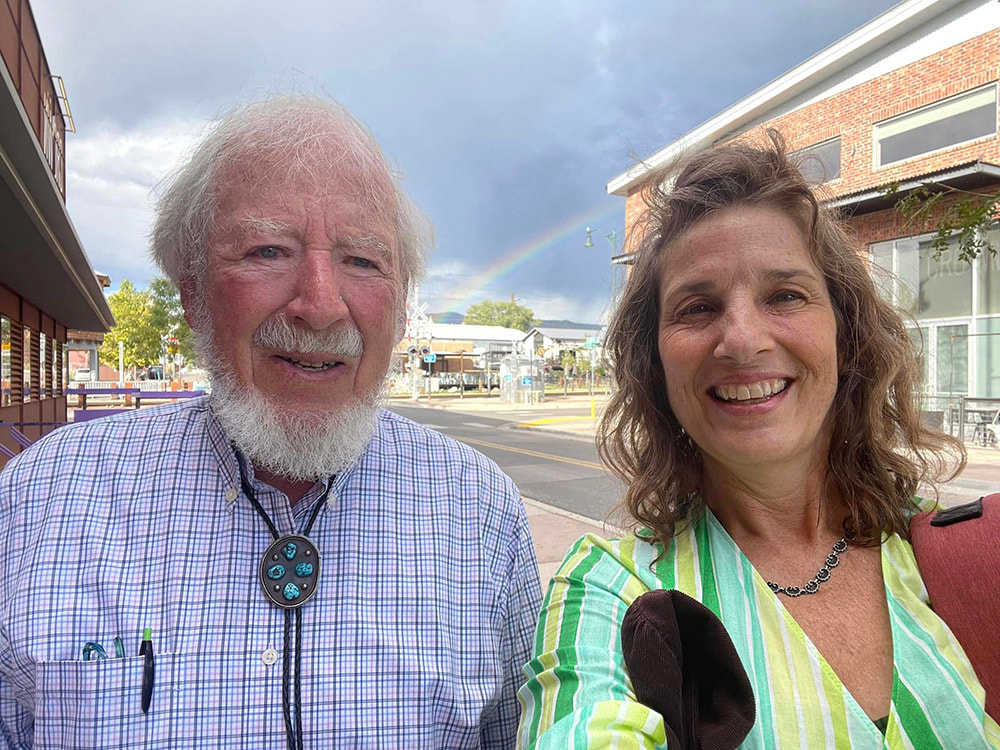
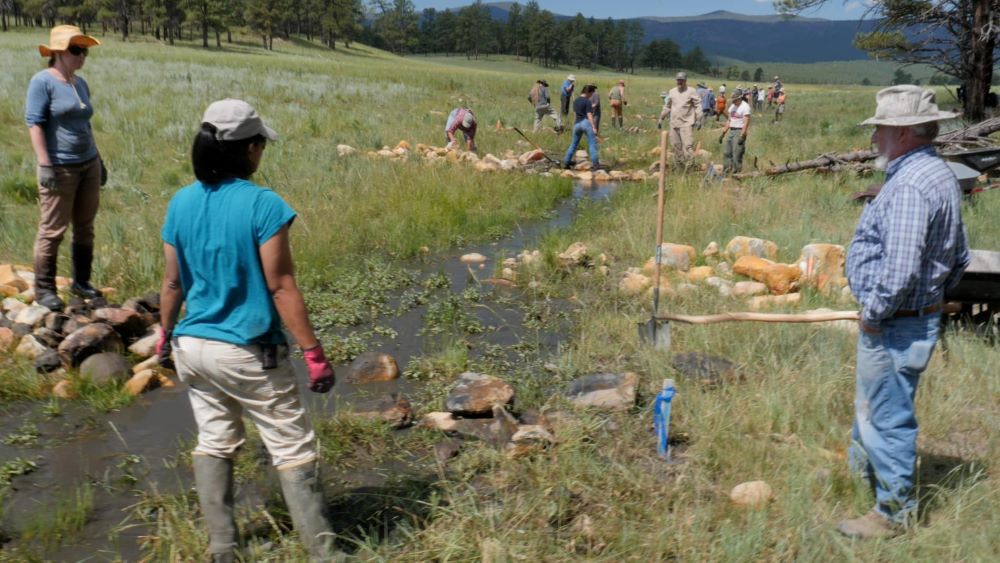
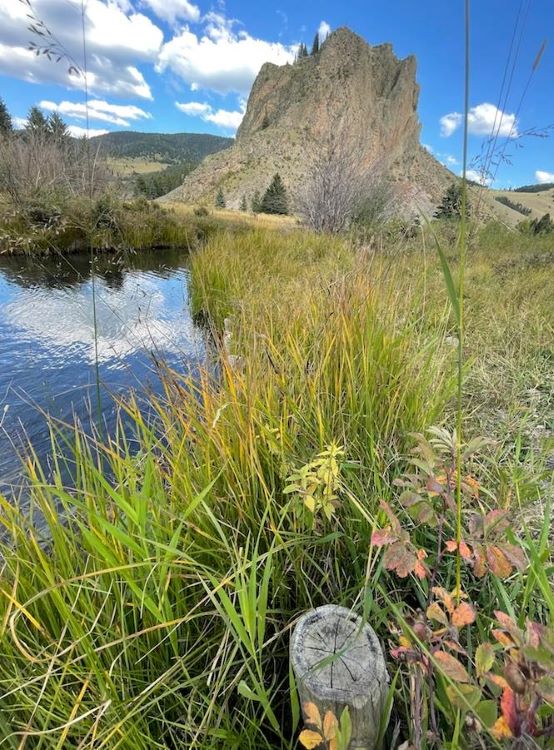
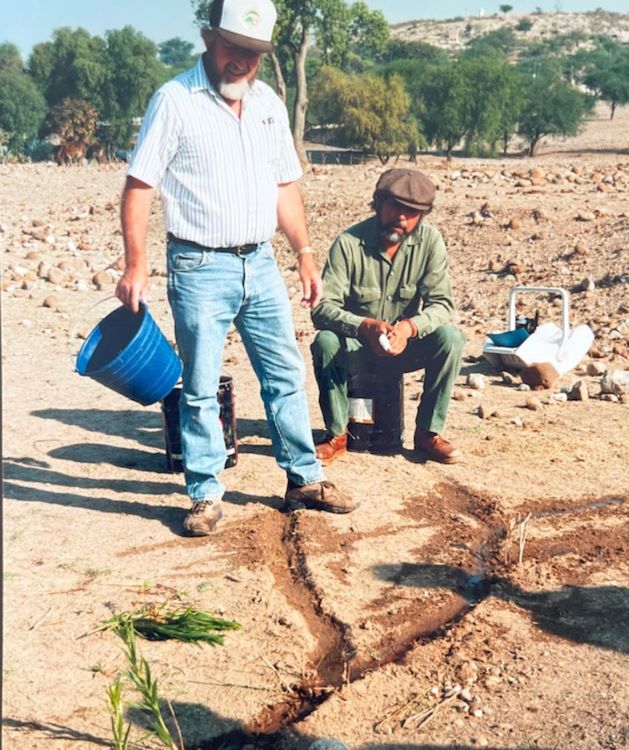
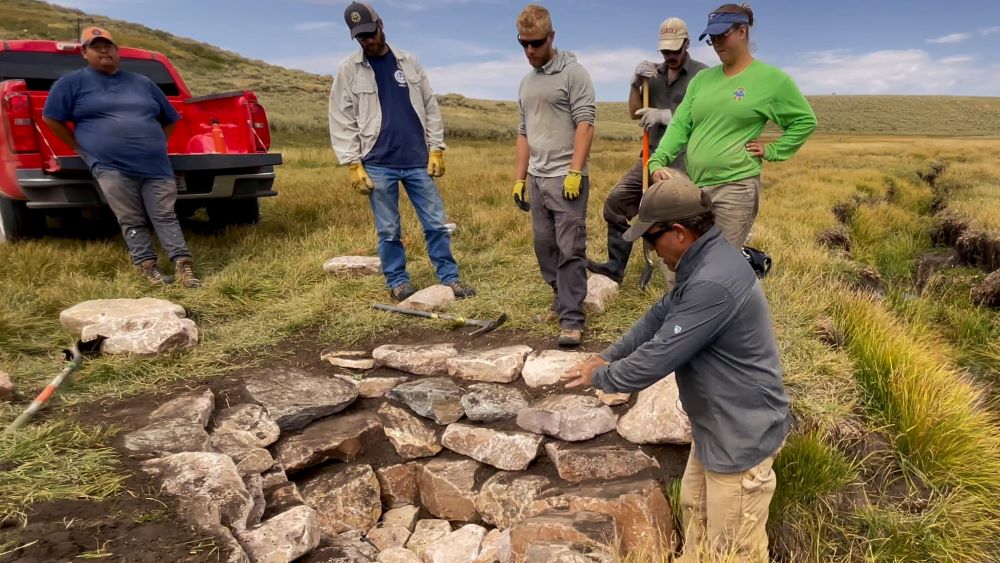
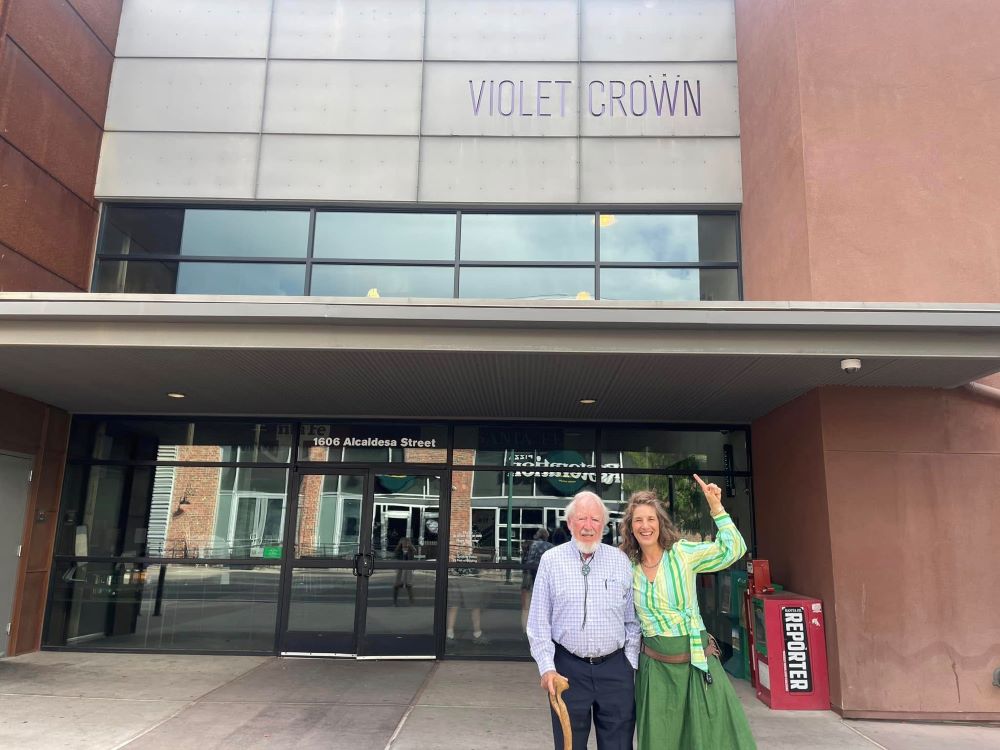


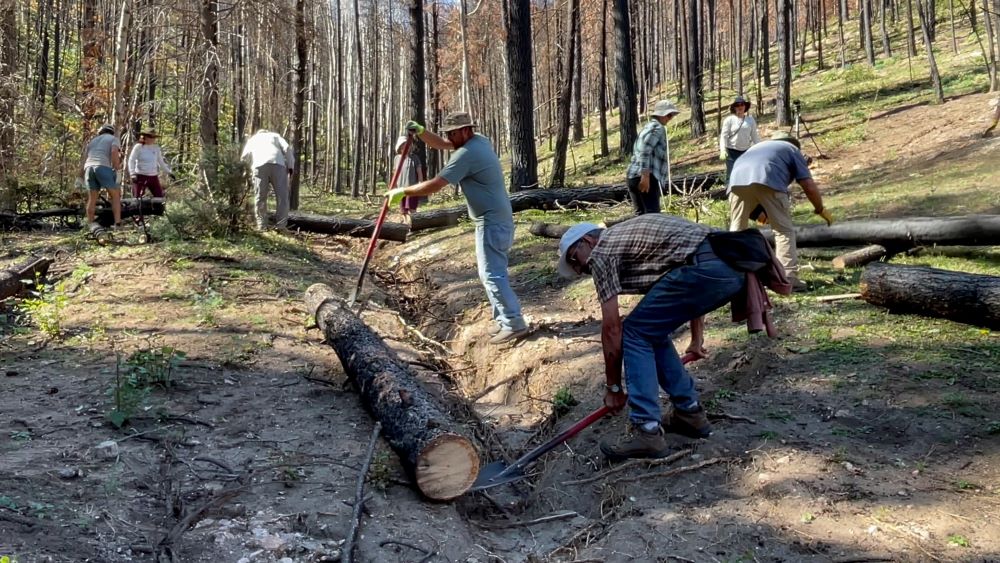
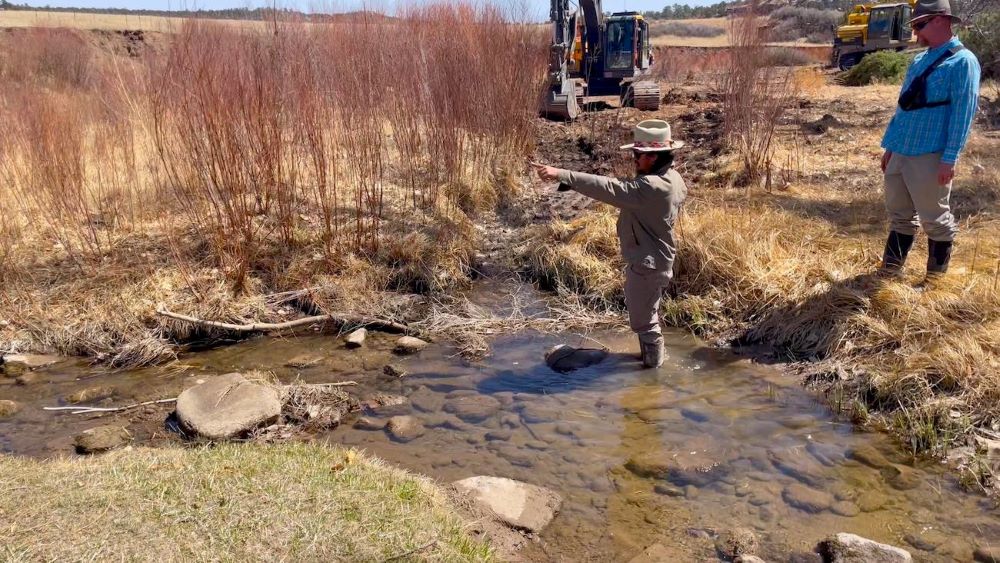
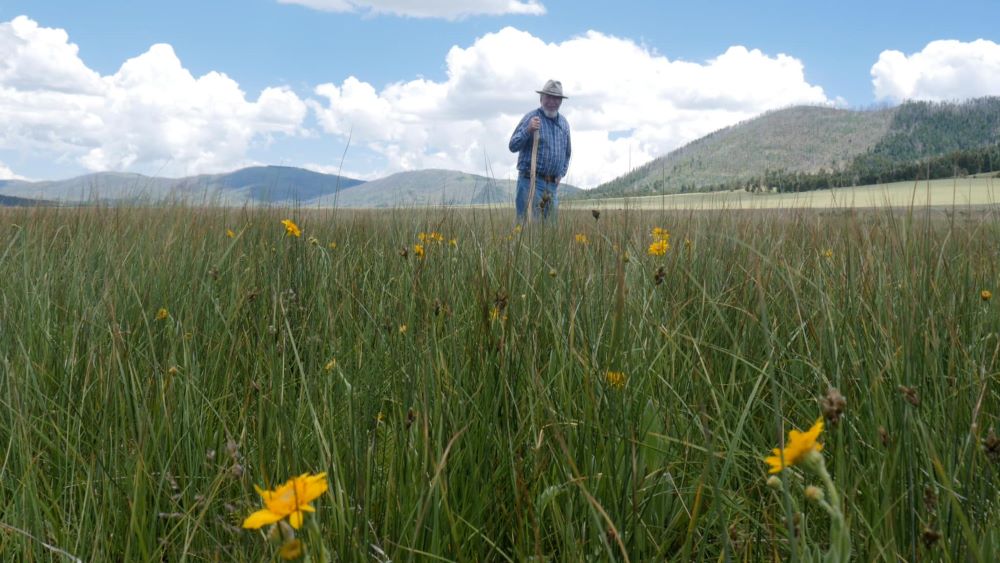

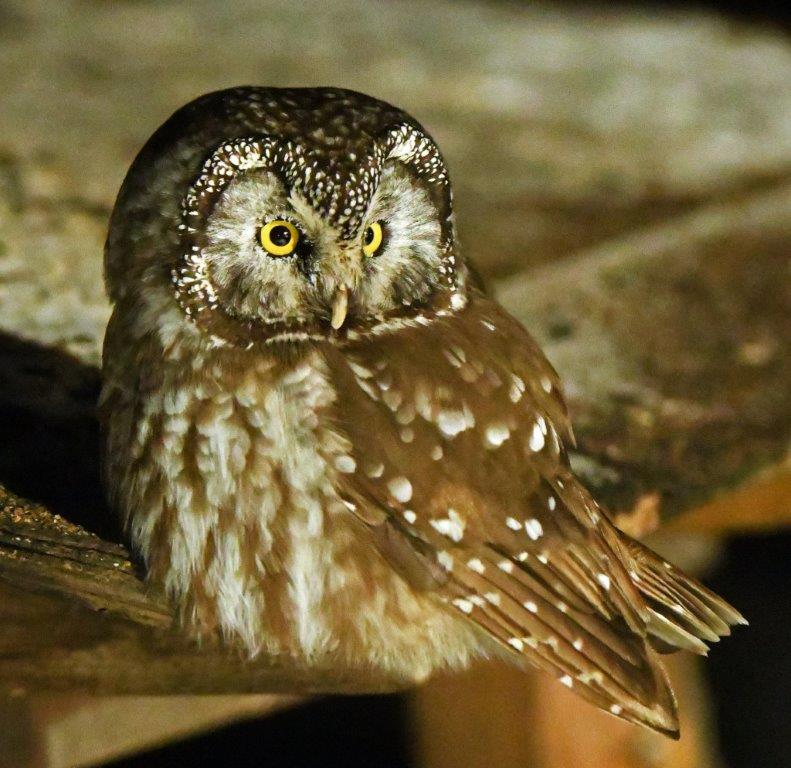



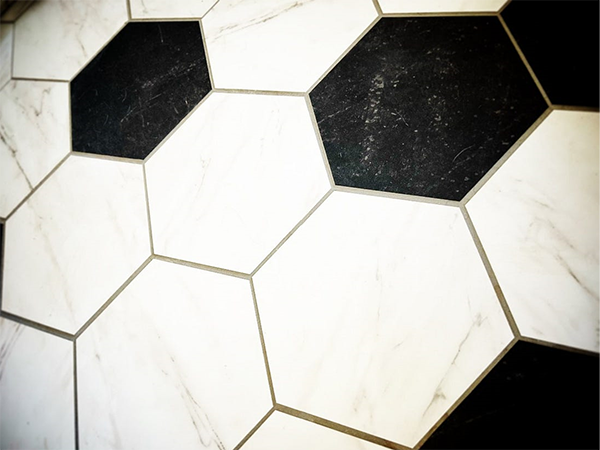
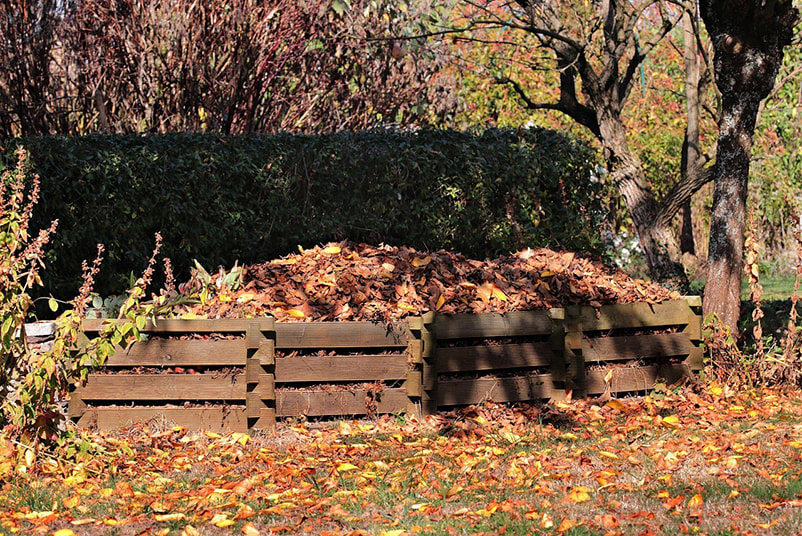
 RSS Feed
RSS Feed